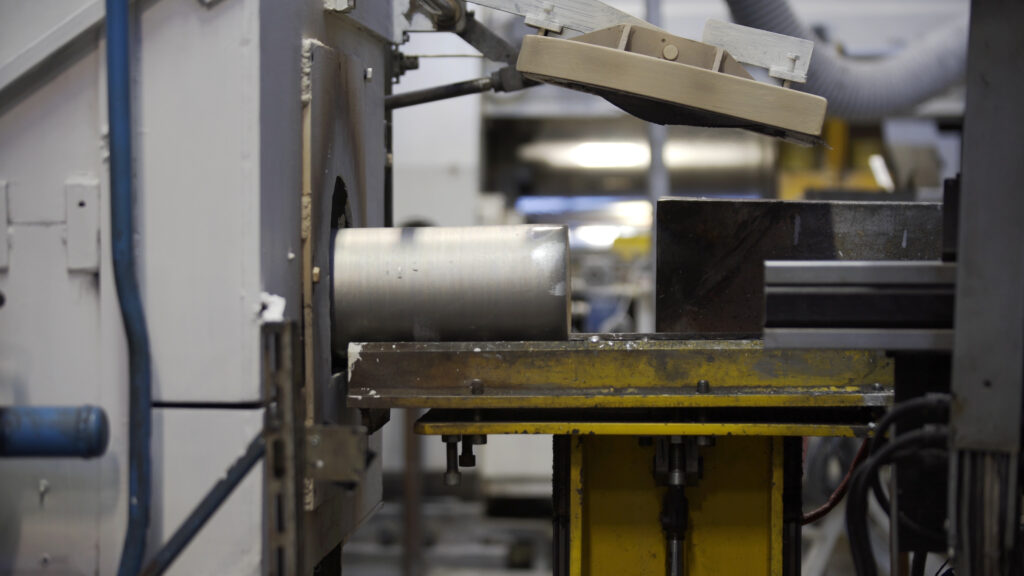Differentiate Between Extrusion And Drawing Processes

Forming metals into specific shapes can be a challenging process. While metal bars and rods can be formed relatively simply, shapes such as tubes, beams, and various types of channel bar are metal configurations that sometimes require special forming processes to create. Two common metal forming processes used are extrusion and cold drawing. While both are common methods of shaping metal, there are differences between them that should be understood before making a metal purchasing decision.
What is Extrusion?
Extrusion is a metal forming process used to make complex shapes. It involves forcing a metal through one side of a die and having a finished product come out the other side. Extrusion is commonly done to form Aluminium. Extruding metal has several steps that are required.
- A metal billet is shaped through smelting, solidifying, and rolling.
- The billet is heated up to a temperature suitable for extruding. The heat makes the metal more malleable and easier to form.
- Pressure is exerted on the billet against the die. The dies used in extrusion have been precision machined to ensure that a quality piece of extruded metal with acceptable dimensions comes out the other side of the die.
- Once the metal is forced through the die, it can be cut to various lengths, coated, annealed, or have any other post-extrusion procedures applied to it.
Advantages of Extruding
- Faster forming process than cold drawing
- Extruded products are generally more affordable than similar cold drawn products
- Usually less wasted metal when extruding, depending on the shape being formed
- Excessive plastic deformation is less of a concern with extruding versus cold drawing
Examples of Extruded Metals:
- Square tubing
- Round tubing
- 80/20 framing
- Custom channeled tubing
- Rod
- Wire
What is Cold Drawing?
Like extrusion, cold drawing is also used to form complex shapes and requires a metal billet to already be formed prior to beginning the process. However, unlike extrusion, heating the billet is not part of the cold drawing process. Rather than being fed through one die, the metal is fed through a series of molds through the cold drawing process. This is because the metal is less malleable and formable without the addition of heat. The number of dies a billet goes through depends on the complexity and thickness of the final shape. After the billet has been cold drawn to the correct metal shape and size, it is ready for post-processing. Cold Drawing is commonly done to form steel and stainless steel, but can also be used to form aluminium.
Notable during the cold drawing process is that the metal being formed goes through plastic deformation. Care must be taken during the cold drawing process to ensure that excessive plastic deformation doesn't occur as it can result in tears in the metal or a brittle final product.
Advantages of Cold Drawing
- Very tight tolerances can be achieved
- Round shapes like pots, pans, and other containers can be made
- Excellent mechanical properties when the process is performed correctly
Examples of Cold Drawn Metals:
- Square tubing
- Round tubing
- Pots
- Pans
- Cans
- Custom shapes
- Rod
- Wire
Reference URL's:
Main Differences and Applications | Star Extruded Shapes, Inc.
Hunker
Metal Supermarkets

Metal Supermarkets is the world's largest small-quantity metal supplier with over 100 brick-and-mortar stores across the US, Canada, and United Kingdom. We are metal experts and have been providing quality customer service and products since 1985.
At Metal Supermarkets, we supply a wide range of metals for a variety of applications. Our stock includes: mild steel, stainless steel, aluminium, tool steel, engineering steel, brass, bronze and copper.
We carry a wide range of shapes including: bars, tubes, sheets and plates. We can cut metal to your exact specifications.
Visit one of our 7 locations in the United Kingdom today.
Differentiate Between Extrusion And Drawing Processes
Source: https://www.metalsupermarkets.co.uk/the-difference-between-cold-drawn-and-extruded-metals/
Posted by: williamsalannow.blogspot.com

0 Response to "Differentiate Between Extrusion And Drawing Processes"
Post a Comment